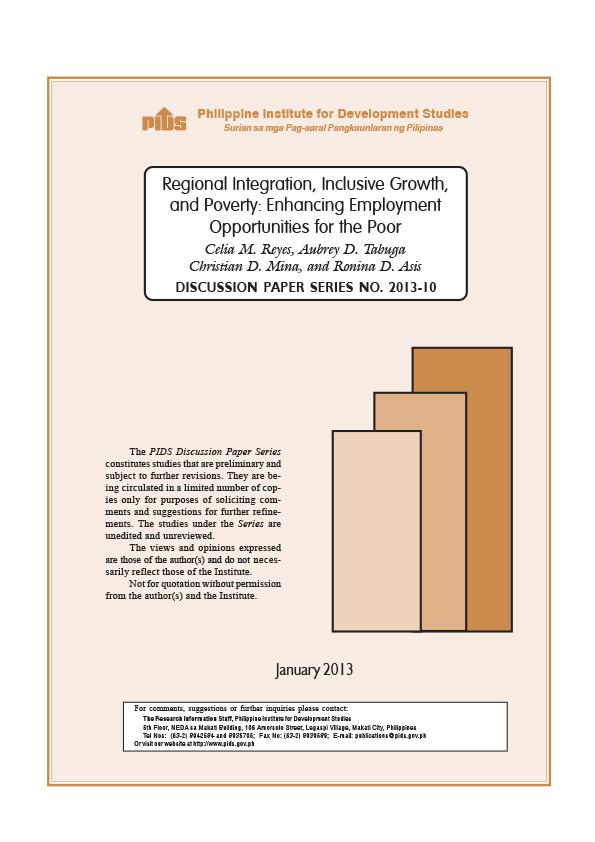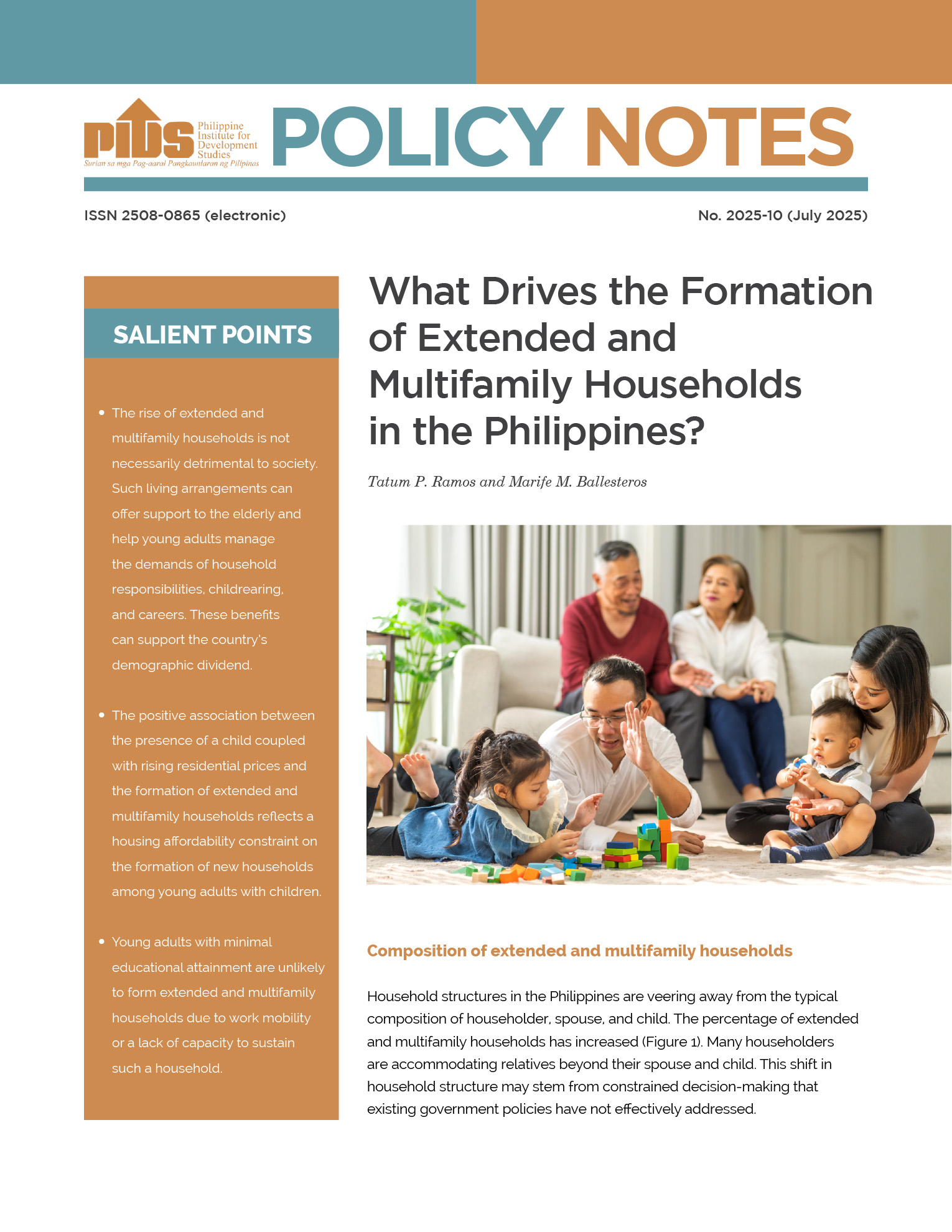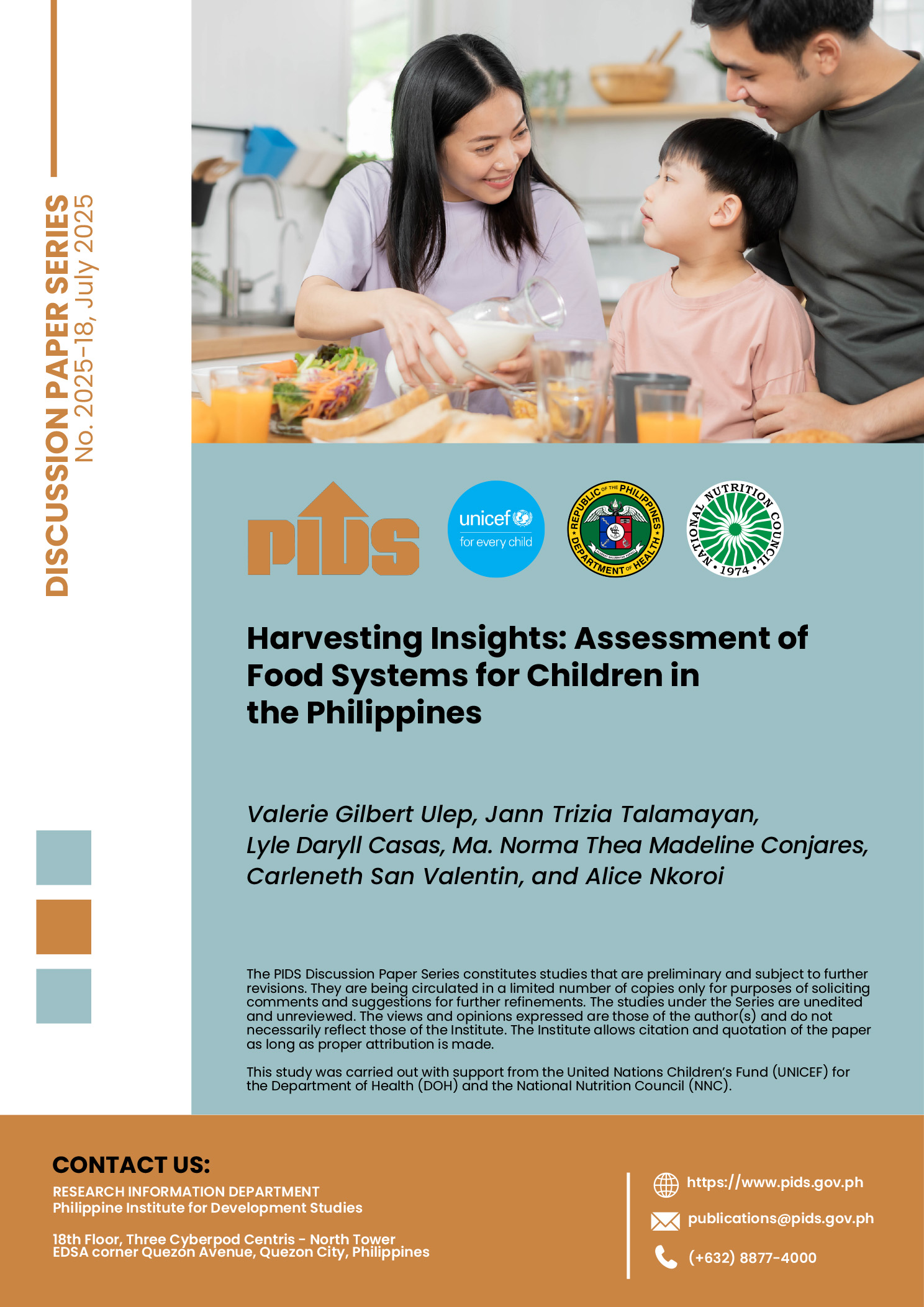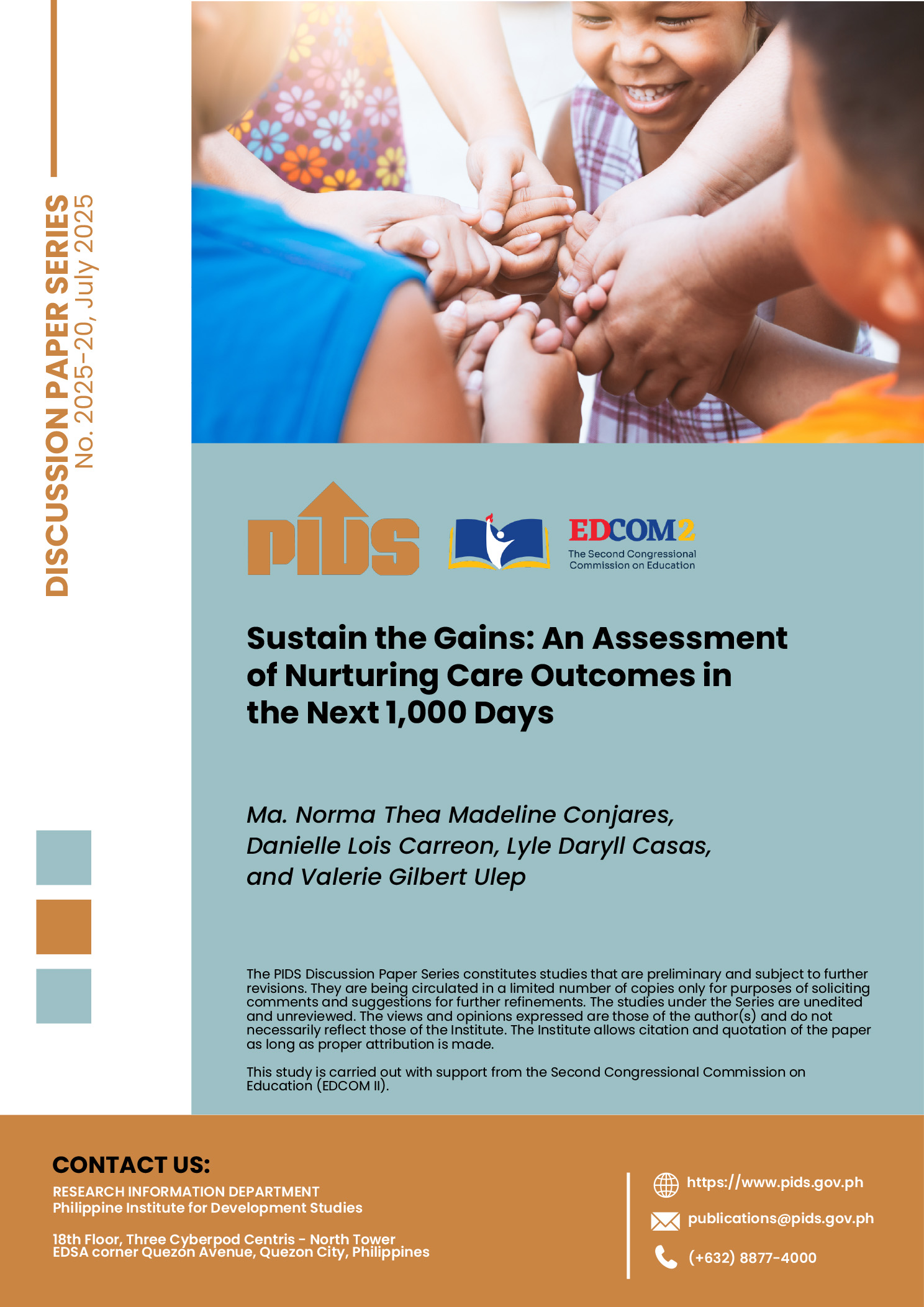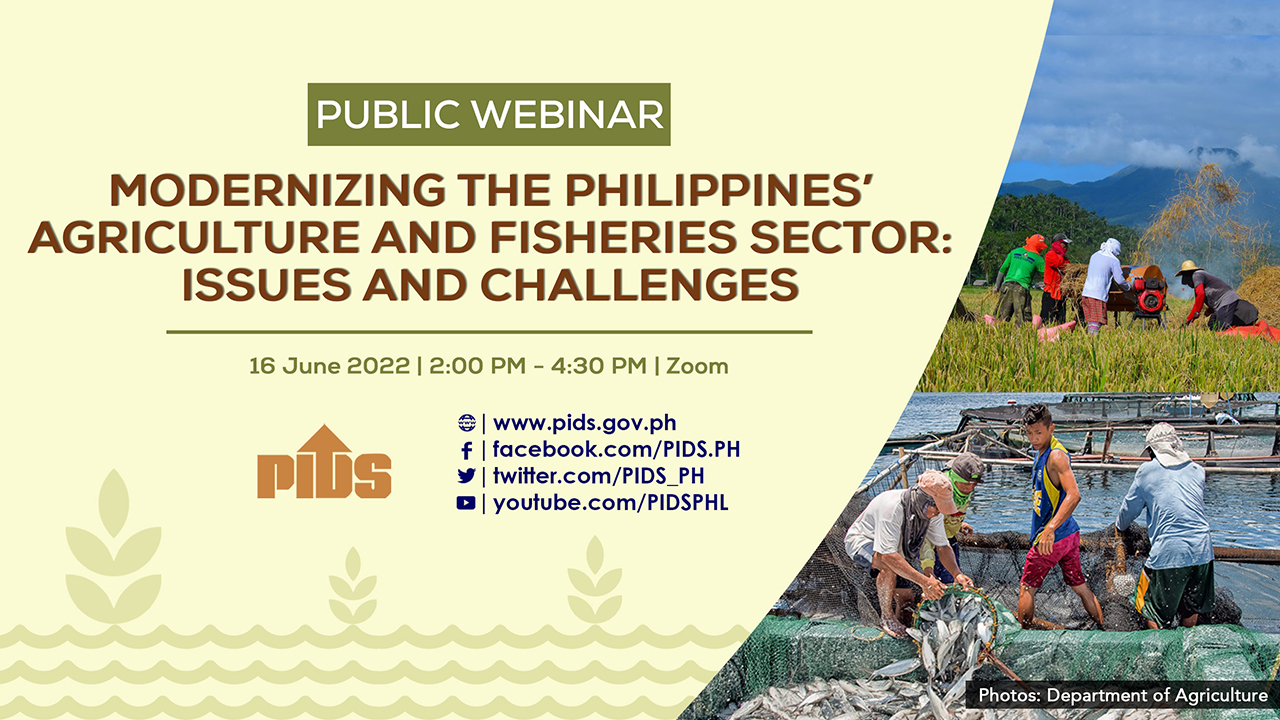Regional economic integration in East Asia is characterized initially as a market-driven process of increased trade and foreign direct investment (FDI) inflows, and eventually by formal arrangements to liberalize trade and integrate economic activities through free trade agreements (FTAs) among East and Southeast Asian countries (Balboa and Medalla 2011). This has led to a more intensified regional production networks participated in by East and Southeast Asian countries, including the Philippines. Set against the backdrop of continuing economic integration in the region, it seems that the growth in the Philippines has not been as inclusive as in the other countries as manifested in the increase in the magnitude of poverty.
This paper examines how we can improve our record on poverty reduction by looking at how we can generate greater demand for the labor services of the poor. Specifically, this paper looks into the linkage between regional production networks and inclusive growth in the Philippines through employment generation for the poor. The manufacturing sector can provide employment opportunities for the poor and can offer relatively higher wages. However, expected high-productivity employment opportunities from the manufacturing sector were not fully realized due to some bottlenecks in the sector. This partly explains the persistence of poverty in the Philippines. To promote inclusive growth and reduce poverty, the manufacturing sector has to be made more competitive and, at the same time, productivity in the agriculture sector (the major employer of poor) has to be increased.
Citations
This publication has been cited 1 time
- Mina, Christian D. et. al. 2015. Review of design and implementation of the Agricultural Insurance Programs of the Philippine Crop Insurance Corporation. Discussion Papers DP 2015-07. Philippine Institute for Development Studies.

